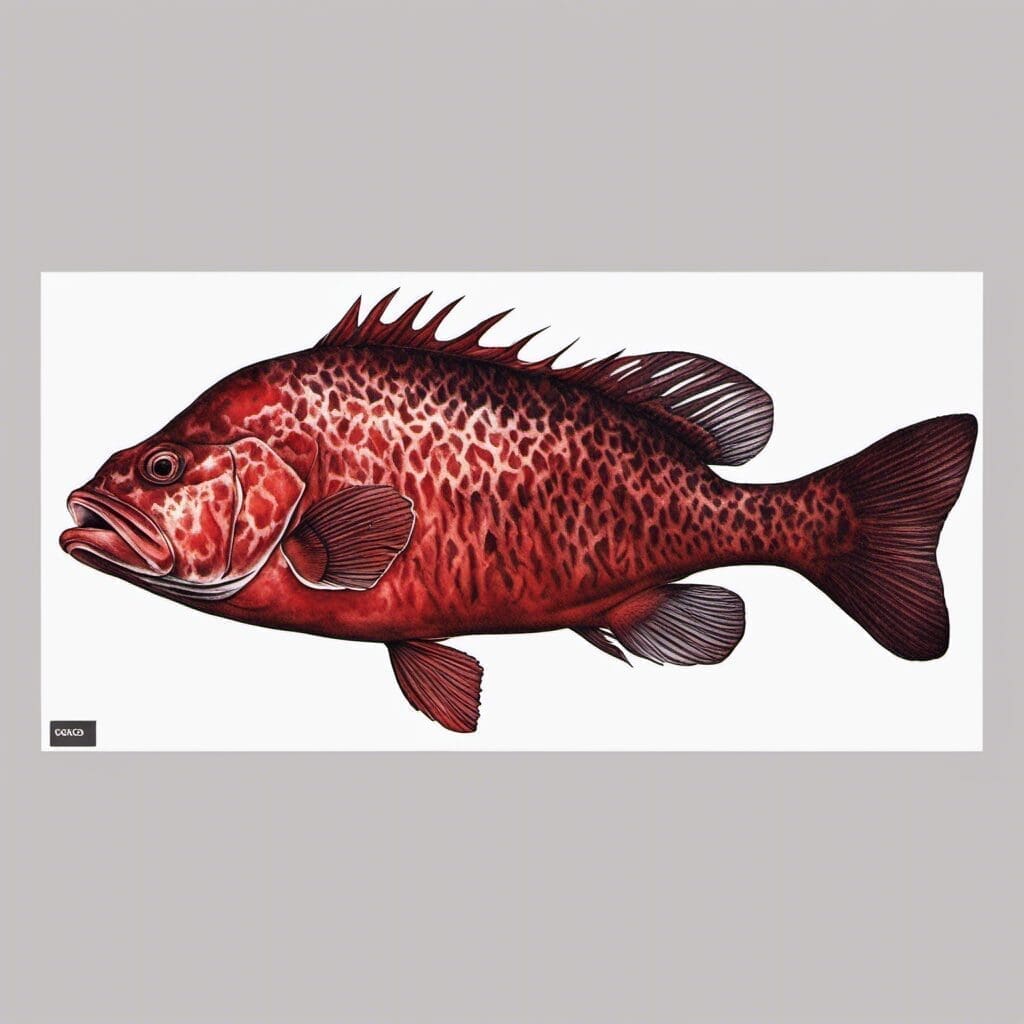Introduction
The Red Grouper (Epinephelus morio) is a species of sea fish that belongs to the Serranidae family. This fish is highly prized for its size, succulent taste, and the challenge it presents to anglers.
Conservation Status
The Red Grouper is listed as “Least Concern” according to the International Union for Conservation of Nature [IUCN](https://www.iucn.org/). Conservation efforts include regulations on catch size and seasons, and promoting sustainable fishing practices.
Statistics
| Length (Average) | Length (Range) | Weight (Average) | Weight (Range) | Average Lifespan |
|---|---|---|---|---|
| 0.5-1 meter | 0.3-1.5 meters | 10-20 kg | 1-50 kg | 10-15 years |
Distribution
Red Groupers are typically found in the West Atlantic, from Massachusetts, USA to southern Brazil. They don’t show significant migration patterns.
Habitats
The Red Grouper thrives in marine or saltwater. They live at depth ranges between 16 to 105 meters. The temperature of the water in which they inhabit ranges from 15 to 30 degrees Celsius.
When and Where to See
Red Groupers can often be seen year-round during the day, especially near rocky bottoms and reef structures.
Best Fishing Locations
- Florida Keys, Florida, USA
- Yucatan Peninsula, Mexico
- Outer Banks, North Carolina, USA
- Bahamas
- Bermuda
How to Catch
Red Groupers respond well to baits like squids and pinpoint fish. Bottom fishing techniques usually yield the best results, in particular during the warm summer months.
Identification Guide
The Red Grouper is recognizable by its brownish-red color, distinctive boxy body shape, and the uneven size of the spines on its dorsal fin.
Culinary
Red Grouper is a versatile fish to cook with a distinctive yet subtle flavor. They’re typically high in protein and low in fat content.
Behavior
Red Groupers are known to be solitary creatures, they typically spend their day hiding in their caves and come out to feed at night.
Predators and Threats
The Red Grouper has natural predators, including larger fish and sharks. They also face threats from overfishing and loss of their coral reef habitats.
Historical Significance
This species has been a crucial part of the fishing industry for generations, playing a significant role in local economies.
References and Further Reading
For more details about this fascinating species, see Marine Life Photography and Fishbase

